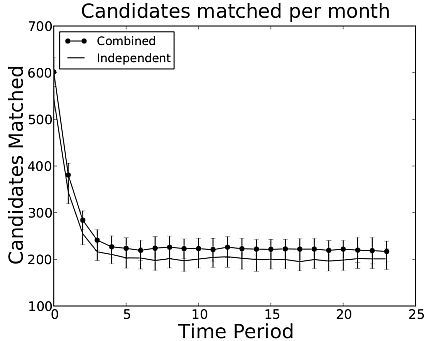Liver and Multi-Organ Exchange
Computer Science Department, Carnegie Mellon University, Pittsburgh, PA
Meeting: 2013 American Transplant Congress
Abstract number: A803
We consider the benefits and challenges of fielding large-scale living donor liver and multi-organ exchanges, from a computational and economic point of view. Kidney exchange, where candidates with inoperable organ failure trade incompatible but willing donors, is a life-saving alternative to the deceased donor waiting list, which has inadequate supply to meet demand. Computer scientists and economists study this problem because it represents an opportunity to field a real barter exchange that improves sustainability of life and creates significant societal value.
We first consider extending large-scale organ exchange to liver lobes. Liver exchange has its own interesting aspects that differ from kidney exchange. We describe and implement a general, and to our knowledge the most realistic, organ exchange compatibility graph generator that can be used for kidneys, livers, or any other organs. We show that it addresses important weaknesses in the most commonly used kidney exchange generator. The new generator includes blood type, tissue type, a more refined CPRA classification, age, gender, weight, etc.
We then show liver exchange clearing results on this demographically accurate data. We can optimally clear liver exchanges at the estimated nationwide size using an enhancement to the fielded kidney exchange clearing algorithm.
We then explore cross-organ donation where a candidate needing a kidney and a candidate needing a liver can swap donors. We show that this increases the total number of lives saved.

We conclude with thoughts regarding the fielding of a nationwide liver or joint liver-kidney exchange from a legal and computational point of view, motivated by our experience running the computational side of the UNOS US-wide kidney exchange pilot program.
To cite this abstract in AMA style:
Dickerson J, Sandolm T. Liver and Multi-Organ Exchange [abstract]. Am J Transplant. 2013; 13 (suppl 5). https://atcmeetingabstracts.com/abstract/liver-and-multi-organ-exchange/. Accessed December 8, 2025.« Back to 2013 American Transplant Congress
